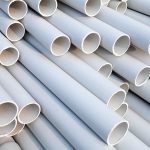2023-11-06 Pageview:2674
How much polyethylene wax should be added to PVC? Polyethylene wax is not only suitable for PVC films, but also for rigid PVC, such as PVC profiles. Polyolefin wax can be used as an internal and external lubricant in PVC films. It has the characteristics of high melt strength, low volatility, etc., and can play a good internal and external lubrication effect.

1. Increase the melt index: Due to limitations of factors such as the thermal stability of the material, the processing temperature cannot be increased indefinitely. At this time, adding an appropriate amount of internal lubricant can change the rheological behavior of the resin melt, effectively Increase the melt index to reduce melt viscosity and improve melt fluidity.
2. Reduce internal heat generation: The adverse consequences of internal heat generation will cause local overheating of the polymer melt and reduce its thermal stability. Adding internal lubricant can effectively reduce the melt viscosity and effectively reduce internal heat generation.
3. Release effect: In the later stage of polymer processing and the product is formed, lubricant with release effect can be added. Lubricants used for demoulding are generally external lubricants, mostly polar compounds. They have limited compatibility with resins and can migrate from the melt to the surface. The polar groups have a certain affinity with the metal surface. sex. This forms a relatively stable and mutually isolated molecular layer between the melt and the metal surface, thereby inhibiting the adhesion between the polymer melt and the surface of the processing machinery.
4. Delayed plasticization: In PVC processing, PVC resin is melted under the action of shear deformation and evenly mixed with various additives. In specific cases, the requirements for resin melting are not consistent. Lubricants with low compatibility in the resin can migrate to the surface of the resin particles or melt at the processing temperature, thereby forming a lubricating layer between the surface of the resin particles or melt and the metal surface of the processing machinery, making the It produces good sliding, weakens the shear deformation effect, and delays the plasticization of the resin.
5. Prevent melt fracture: High viscosity at high shear rates can lead to a surface phenomenon called melt fracture because the extruded material undergoes regular adhesion/slip transitions within the flow channel.
6. Change the self-lubricity of the product: Many plastic products require good surface lubrication, such as wheels. Lubricants with external lubrication effects can often form a self-lubricating layer by migrating or exuding to the surface of the product. , producing long-term lubrication.
7. Slippery and anti-adhesion effects: For plastic products with large surface areas, surface adhesion often brings many difficulties to their production or application. Many lubricants with external lubrication effects are applied to the surface of the products. The surface migration is large, and a thin and evenly distributed coating can be formed after cooling. Since the two interfaces are inserted into the isolation layer, it not only gives the surface of the product sliding properties, but also prevents the surface from being rough. This function helps The agent is called a slip agent.
Since PVC has poor thermal stability, corresponding stabilizers must be added to repair the defects in the PVC chain and at the same time absorb the HCL produced by PVC dechlorination in a timely manner. At the same time, due to the processing characteristics of PVC with high viscosity and high shear, corresponding lubricants such as polyethylene wax must be added when adding stabilizers.
 Leave a message
Leave a message



We’ll get back to you soon